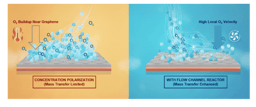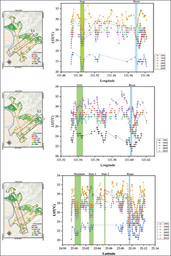Mapping Morocco’s erosion hotspots: a new modeling approach to secure soils and water
Published in Earth & Environment and Sustainability

In this pioneering work, the authors, Pedro Pérez-Cutillas, Sara Benabdelouahab, and Adil Salhi, undertook a comprehensive national-scale modeling initiative to assess and mitigate soil erosion across Morocco’s twelve major river basins. These basins, spanning varied climatic and topographic gradients from Mediterranean hillsides to arid plains, served as a natural laboratory to explore the effectiveness of Sustainable Land Management (SLM) strategies.
The team employed the InVEST Sediment Delivery Ratio (SDR) model, calibrated with long-term sediment yield data from 42 reservoirs, to capture the spatial dynamics of soil erosion, sediment export, and natural retention processes. Through meticulous integration of high-resolution inputs, including rainfall intensity, soil erodibility, land use, and slope, they generated a detailed picture of erosion pressures and sediment pathways across more than 100 sub-basins.
Crucially, the authors went beyond conventional static modeling by simulating realistic land management scenarios. They tested the impact of a 25% increase in soil organic matter in agricultural lands, revealing that this measure alone could reduce sediment export by over 25% in erosion-prone northern regions, and prevent more than 1 ton of soil loss per hectare annually in vulnerable croplands. The effectiveness of such practices was especially pronounced in forested and terraced zones, where natural retention processes are enhanced.
Their approach also included advanced geo-statistical analysis and sensitivity testing to quantify the influence of key environmental variables, helping to establish thresholds for effective intervention, such as maintaining forest cover above 25% and targeting areas with high precipitation and slope gradients. These findings offer clear, data-driven benchmarks for policymakers and land managers.
By combining technical precision with policy relevance, the authors have produced a replicable framework for erosion mitigation that balances environmental integrity and agricultural productivity. Their work exemplifies how science-based modeling can guide targeted, adaptive strategies for sustainable land use, not only in Morocco but across regions facing similar ecological vulnerabilities.
Follow the Topic
-
Earth Systems and Environment

This is a multidisciplinary journal publishing peer-reviewed research on Earth System sciences and environment-related topics.





Please sign in or register for FREE
If you are a registered user on Research Communities by Springer Nature, please sign in